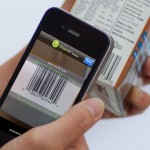 I’ve been thinking a lot about grief lately — for several reasons. September is the month in which my best friend lost her mother to cancer when we were barely 21. And this summer, my mother and father lost several friends including a best friend’s husband. October 12th marks the anniversary of the death of a childhood friend, Joe Milligan, in the Bali bombing in 2002. And just 6 weeks ago, I lost someone else — a mentor, a former boss and above all, a good friend — Bill Moggridge. As part of my personal grieving process, I’d like to tell you a little bit about my time with this incredible man, whom I was so fortunate to know.
I’ve been thinking a lot about grief lately — for several reasons. September is the month in which my best friend lost her mother to cancer when we were barely 21. And this summer, my mother and father lost several friends including a best friend’s husband. October 12th marks the anniversary of the death of a childhood friend, Joe Milligan, in the Bali bombing in 2002. And just 6 weeks ago, I lost someone else — a mentor, a former boss and above all, a good friend — Bill Moggridge. As part of my personal grieving process, I’d like to tell you a little bit about my time with this incredible man, whom I was so fortunate to know.
I met Bill in my first few weeks of what seemed like dream-induced days at IDEO, a place IÂ’d only imagined working after several chance encounters with stories or articles in design school. IÂ’d somehow managed to find a way in and 9 years later, IÂ’m still not sure how I was and am so lucky.
Bill was one of three co-founders of IDEO and identical to the other two co-founders — David Kelley and Mike Nuttall — in that he was one of the most delightful humans I had/have ever encountered. He made me feel like I had a west coast grandfather — someone who would always look out for me, but wasn’t afraid to tell it like it was. All with a smile and a wink.
Fast forward years later, I was able to work on one of Bill’s first books, Designing Interactions, along with my design director and later professor, Hunter Wimmer. And while the ink was drying on Designing Interactions , Bill asked if my colleague Angella Okawa and I wanted to design and build the website for Designing Interactions with him (and trust me, this was well before web 2.0). “Sure!” I said, having absolutely no idea how to really do this at the level I knew he would expect it. Bill was such a patient teacher and taught me so much throughout the design and build (as did Angella). IÂ’m fairly certain that this was exactly his point.
Not long after the site ask, Bill invited me to his desk, which overlooked the IDEO Palo Alto lobby — his perch if you will. He inquired about whether I’d be interested in teaching the graphic design section of his Transformative Design class at Stanford (specifically the d.school) with another amazing man, Bernie Roth. Naturally, I was completely terrified and asked if I could phone a friend. For nearly four years Mia Blume and I taught the the graphic design section of Bill’s class. The best part? Bill taking all of us to what he called “a fancy dinner” in celebration of the quarter’s end.
Later on, when Bill took the role of Director at the Cooper-Hewitt in New York, my heart was broken, but I knew it was an amazing opportunity for both Bill and the Smithsonian. After all, this was where IÂ’d first seen Kyle CooperÂ’s work when I was 19 and realized that typography really was as cool as I thought! Bill and I were mid-way through Designing Media when he moved to Manhattan, so I was fortunate enough to talk to him weekly and visit when I could. I can still envision him in his Cooper-Hewitt office, formerly the Carnegie mansion, telling me all about the Carnegie family and the daughter who once lived where he sat.
I’ll never forget handing over the final files for Designing Media to both Bill and MIT and hearing him say, all while chuckling, “Well THAT was a lot of work!” Good Lord was he right, but I would do it all over again. All for Bill.
Even in his last days, I leaned over and said, “Really, what do you need?!” He motioned me to come closer and whispered, “I need…for my jokes to be better.” I nearly lost it I was laughing so hard.
And so this is grief for me. From my one and only psychology class in undergrad, I know that there are generally five stages to grieving — and I am, I think, in step 5: acceptance. Reflection is acceptance for me and the more I talk and hear and read about Bill, the more I realize that he lives in all of us, and will for a very long time.
Cheers Bill! I will never drink a glass of Spanish bubbles or look at a beautiful view or admire a typeface and not think of you and your whole lovely family. Danny Stillion said it best I think, “Thank you for all of the wonderful interactions.” That seems so fitting and perfect for the man who created the design of interactions.
(If you’re not familiar with Bill’s work, please check out the Cooper-Hewitt’s truly amazing short film, read Tim Brown’s recent post and Julie Lasky’s lovely piece in the NYTimes, as well as Leslie Kaufman’s. And of course, the site that several of us at IDEO built for Bill with his permission: billmoggridge.com)

